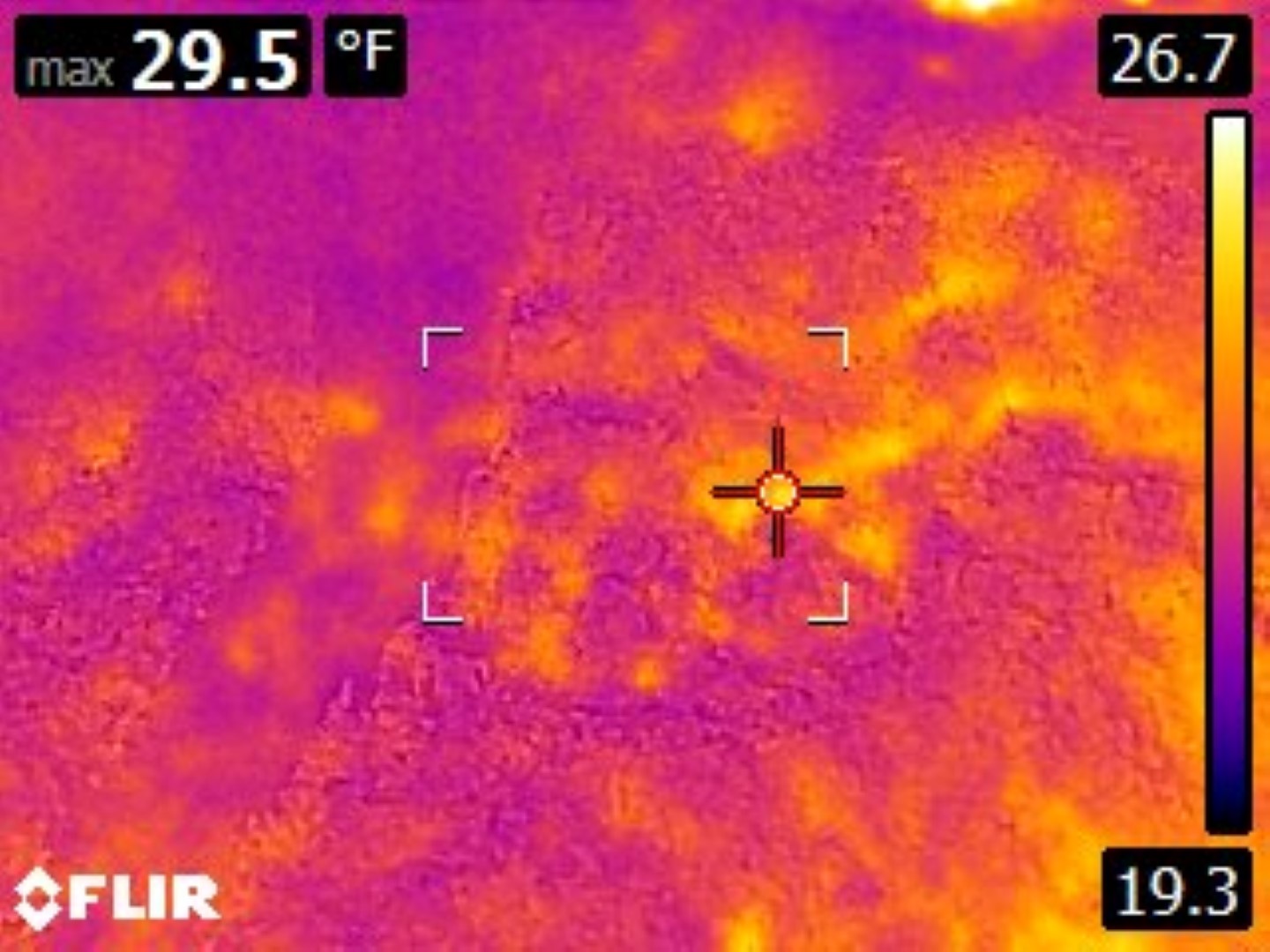Wrong. Mouse infestation is a VERY big deal
As a home inspector in the Stillwater area, I look for evidence of mouse infestation. According to the Standards of Procedure as set by the Association of Home Inspectors (ASHI), I’m not required to report on the presence or absence of rodents. (Why? Well, they hide. And the seller certainly knows I’m coming, so could clean up droppings.)
Nonetheless, when I see evidence of mice presence. I let the buyer know.
According to the folks at Orkin, the common house mouse is pretty common.
Believe it or not, they have a web site! Click: Orkin web site

With an Infrared camera, I can see where heat is coming through the insulation via mouse tunnels
Want to learn some disturbing facts about mice? (Sure. Why not.)
A female mouse starts to produce offspring at about 30 days. She can have 6 to 10 litters a year. I can’t do the math. I think it comes to a lot of mice.
2 mice can eat 8 pounds of food and leave 36,000 droppings in a year. And they contaminate 10 times the food they eat.
Next to humans, the mus musculus is one of the most prevalent mammalian species in the world. House mice are covered in short hair that is light brown or gray to black in color, with lighter bellies. Their ears and tail also bear hair, although much less than their bodies. Adult mice weigh approximately 12 to 30 grams and can grow up to 20 cm from the nose to the tip of the tail. Droppings are rod-shaped and pointed on both ends.
Ready for a list of diseases?
Babesiosis
Colorado Tick Fever
Cutaneous Leishmaniasis
Human Granulocytic Anaplasmosis
La Crosse Encephalitis
Lyme Disease
Murine Typhus
Omsk Hemorrhagic Fever
Powassan Virus
Scrub Typhus
Rickettsialpox
Relapsing Fever
Rocky Mountain Spotted Fever
Sylvatic Typhus
West Nile Virus
Okay. Some of those diseases aren’t in this area. But still.
Some problems start when urine dries and becomes airborne, or when you vacuum or sweep the droppings, so don’t sweep or vacuum the droppings. Instead, disinfect first. Pin Sol works great. Mist the area with a Pine Sol/water mix, and then wipe up with paper towels. Wear gloves and a respirator. And wash your clothes with hot water and 1/2 a cup of Pine Sol as soon as you’re done.
Other problems have to do with how much damage a mouse can do by chewing insulation, furniture, clothes, building materials and wiring. Yup. mice have started fires by chewing on wires and causing short circuits.
So what to do?
Seal gaps and cracks in the foundation like crazy. The most effective and humane method of pest control is to restrict entry in the first place. If you can stick your pinky finger in a hole or crack, an adult mouse can get in. I know. I saw a video. Want to see it (really? It’s kind of disturbing.) Click Tiny mouse holes
Prevention is your best bet. But an infestation is probably above your pay scale. Get an exterminator. Honestly, it’s money well spent. Find a small, local company and check out prices and guarantees. A good exterminator seals first, then traps before using poison. That method reduces the number of little dead bodies all over the house.
House pests of all kinds are bothersome, but there are a lot of common sense solutions. Click HERE for a very interesting article written by Jesse Miller.
To recap; mice cause problems in homes. As Jack Reacher says, retaliate first.


